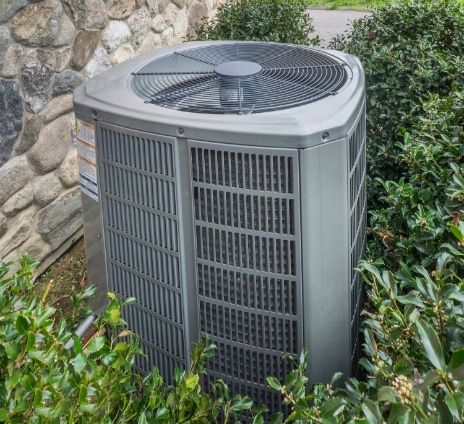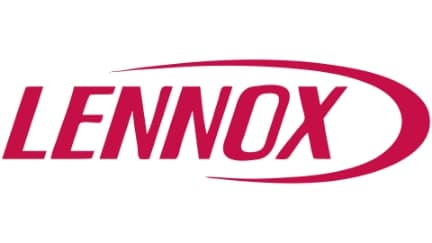What is an HVAC System and How Does it Work?
Updated: February 16, 2024
What is an HVAC System?
First and foremost, HVAC stands for heating, ventilation, and air conditioning. This system provides heating and cooling to residential and commercial buildings. You can find HVAC systems anywhere from single-family homes to submarines where they provide the means for environmental comfort. Becoming more and more popular in new construction, these systems use fresh air from outdoors to provide high indoor air quality. The V in HVAC, or ventilation, is the process of replacing or exchanging air within a space. This provides a better quality of air indoors and involves the removal of moisture, smoke, odors, heat, dust, airborne bacteria, carbon dioxide, and other gases as well as temperature control and oxygen replenishment.
How Does an HVAC System Work
The three main functions of an HVAC system are interrelated, especially when providing acceptable indoor air quality and thermal comfort. Your heating and air conditioning system is often one of the most complicated and extensive systems in your home, but when it stops working you’ll know soon enough! There are nine parts to your HVAC system that you should be familiar with the air return, filter, exhaust outlets, ducts, electrical elements, outdoor unit, compressor, coils and blower.
Air Return
Your air return is the part of your system that marks the starting point of the ventilation cycle. This return sucks in air, draws it through a filter, and then passes it into the main system. Pro tip: Make sure to dust your returns frequently as debris and dust can easily build up on your filters.
Filter
Your filter is the second part of the air return in which the air is drawn through. Pro tip: Make sure to change your filters regularly to keep your system in tip-top shape.
Exhaust Outlets
Another part of your system is the exhaust outlets where the exhaust created by the heating system is expelled. Pro tip: Check your chimney flue or vent stack annually and tune it up if necessary.
Ducts
Your ducts are the channels in which the heated or cooled air passes through. Pro tip: Get your ducts cleaned every 2 to 5 years in order to keep everything in working condition.
Electrical Elements
This part of your system can be a bit trickier, but often problems originate here first. Pro tip: If something isn’t working right check for a tripped breaker or dead batteries in your thermostat.
Outdoor Unit
This is likely the part of your system you think of when someone mentions an HVAC system. The outdoor unit houses the fan which provides air flow. Pro tip: Keep your unit clear of debris and vegetation as it can cause serious problems if plants are sucked into your fan.
Compressor
As a part of the outdoor unit, the compressor is responsible for converting refrigerant from a gas to liquid and sends it to the coils. Pro tip: If something isn’t working quite right, check your compressor. It is often the cause of many system failures.
Coils
Usually another part of the outdoor unit, coils cool the air as it passes through with a little help from the refrigerant. Pro tip: Check your coils annually. If they freeze up you may want to check your filter and/or refrigerant levels.
Blower
The blower draws in warm air through the main section of the unit. Pro tip: The more efficiently this air moves through, the more durable your system will be.

What is Included in an HVAC System
Since we now know that HVAC stands for heating, ventilation, and air conditioning, we know that those are the three main parts included in the entire system.
The heating element usually refers to a furnace or boiler. It includes a pipe system for the fluid carrying the heat or duct work if you’re working with a forced air system.
The ventilation element is either natural or forced and when it is forced it is more often than not used for air cleaning purposes as well.
As many of us know the third and final element of an HVAC system is air conditioning which is the exact opposite of heating. It’s main focus is to remove the existing heat from the interior of the home.
What is the difference between HVAC and air conditioning
Surprisingly, we get this question a lot. So what exactly is the difference between HVAC and air conditioning, you ask? Well air conditioning is actually the last portion of what HVAC stands for, but they are often used interchangeably in reference to any type of heating or cooling device in a home. Think about HVAC as the overarching term and air conditioning as one piece of the puzzle.

Which HVAC Brand is Best?
There are quite a few front runners in the HVAC world, but here at Brennan Heating & Air Conditioning we only install Lennox and that’s for a number of reasons. First and foremost, Lennox has been manufacturing a quality product for over a century. Next, Lennox is well known for being reputable and offering highly efficient products. Finally, Lennox provides all of their customers with the information they need to make the decision on their next home improvement investment.
How Many Years Does an HVAC System Last
Now that you understand exactly what an HVAC system consists of, you’re probably wondering how long a new one will last you. This really depends on the equipment to know how long the system will last. But, if you keep up with your recommended annual maintenance your equipment will last you for years and years to come. Are you looking to replace your existing HVAC system? Or maybe you’re looking to add one altogether? Call your local heating professionals and air conditioning professionals at Brennan Heating & Air Conditioning!
Contact Brennan Heating & Air Conditioning today!







